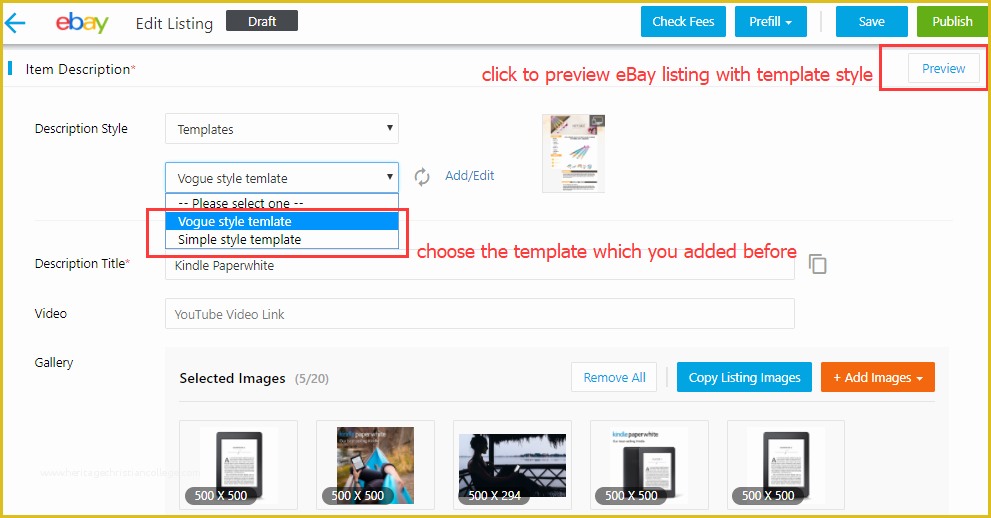

The return policy will be the same for every listing, so it can remain in your description. The tags will allow the Product Name and eBay Description to automatically pull from Solid Commerce. Even if your "design" is as simple as a large font for the product name, followed by a product description, and ending with stock return policy text, you should tag your design.

Once you have your description set up, see the Key HTML Tags section of this article to tag so that it is automatically populated with information and images. For more details, see the Free HTML Editing Tools section of this article. Using an editor will allow you to easily change fonts, add colors, use bullet points, and more. If you want to do a bit more customizing, we recommend creating your eBay description in an HTML WYSIWYG editor.

For more info about HTML tags, see the Key HTML Tags section of this article. creates breaks between lines of type and emboldens text. You can also do some simple customization by adding HTML commands to your text. We'll show you how in the Populating Your eBay Descriptions section of this article. Solid Commerce supports all styles of eBay descriptions and templates. Either way, you can tag your description to automatically populate it with information and images. Others use custom created eBay templates to brand their listings. Some sellers use basic text descriptions. The eBay description is the area of the listing below the listing information and item specifics.

You do not need any HTML experience or knowledge to use this article. Our goal is to make providing eBay descriptions faster and easier. If you have an eBay template design, we'll show you how to set it up to automatically populate with images and information. This article will explain how to provide descriptions to eBay through Solid Commerce.


 0 kommentar(er)
0 kommentar(er)
